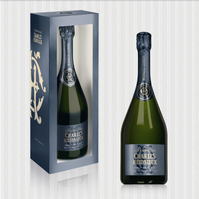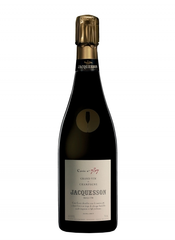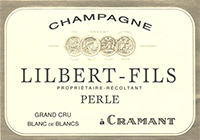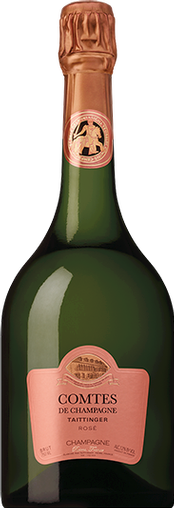|
|
 |

I don’t know more than a handful of people who don’t love Champagne, yet I’m often surprised by how few people really appreciate its greatness as a wine. Indeed, many casual consumers don’t think of Champagne as wine at all, regarding it rather as a top-shelf rendition of a distinct beverage category including everything with bubbles…including Mimosas. For my part, I think that Champagne may be the best of all wines, with great renditions offering levels of complexity and age-worthiness that top bottles of Burgundy and Bordeaux can match--but rarely surpass. If you’ve yet to taste a wine that has led you to think of Champagne as playing in that league, here are seven examples that might do the trick.
I’ve listed the seven wines in alphabetical order, as all are very worthy examples of different styles. I’ve tried to indicate realistic pricing, but you should beware that Champagne prices vary wildly. “Suggested Retail Pricing” is almost meaningless in this wine category, and in some cases one can find a retailer selling a particular Champagne for double the price asked at another store.
Consequently, it pays to shop around, but it also pays to buy from a successful retailer that stores Champagnes properly and turns them over rather rapidly. I recently saw a bottle of Krug at an attractive price in a small, all-purpose grocery store near my home, but since it was standing up in a sun-drenched display case, I resisted the temptation to liberate it from the store. Thankfully, I also resisted the temptation to throttle the shopkeeper, which I was itching to do, as my whole insane love affair with wine exploded out of a single bottle of Krug tasted in December of 1986. Hopefully, one of these wines will trigger a comparably powerful epiphany for you:
Charles Heidsieck (Champagne, France) “Réserve” Brut NV ($60, Rémy Cointreau USA): This wine was re-designed about two years ago, and it is an object lesson in how good the house of  Charles Heidsieck has become at every level. A multi-vintage blend that includes fully 40% of reserve wines, many of them more than 10 years old, it packs one of the most powerful and layered bouquets of any Champagne you can buy at any price. At the risk of belaboring the obvious, I should observe the word “bouquet” should only be used as a wine descriptor when--as in a floral arrangement--it describes a bundle of many distinct things. That is indeed the case with the surpassingly complex, layered scents given off by this wine. The flavors are also very deep, rich and impressive. Although the wine’s finish isn’t flawed in any way, one must say that it doesn’t quite live up to the aromas and flavors of the wine, though that is really just another way of saying that this is a Champagne that smells and tastes amazing. I’ve seen it priced below $50 on occasion, which makes it one of very the best bargains offered by the entire Champagne region. More soon on the Vintage Brut 2000 from this house, which is on a terrific tear. 93 Charles Heidsieck has become at every level. A multi-vintage blend that includes fully 40% of reserve wines, many of them more than 10 years old, it packs one of the most powerful and layered bouquets of any Champagne you can buy at any price. At the risk of belaboring the obvious, I should observe the word “bouquet” should only be used as a wine descriptor when--as in a floral arrangement--it describes a bundle of many distinct things. That is indeed the case with the surpassingly complex, layered scents given off by this wine. The flavors are also very deep, rich and impressive. Although the wine’s finish isn’t flawed in any way, one must say that it doesn’t quite live up to the aromas and flavors of the wine, though that is really just another way of saying that this is a Champagne that smells and tastes amazing. I’ve seen it priced below $50 on occasion, which makes it one of very the best bargains offered by the entire Champagne region. More soon on the Vintage Brut 2000 from this house, which is on a terrific tear. 93
Pascal Doquet (Champagne, France) Grand Cru Blanc de Blancs Brut 2004 ($75, Robert Kacher Selections): This is not only among the best Champagnes that I tasted in 2014, but also among the very best wines of any type. Made entirely from Chardonnay grapes sourced from vineyards in the famous village of Le Mesnil sur Oger, it conveys all of the best qualities of a great Blanc de Blancs Champagne from the first whiff to the last sensory note of the delicate but exceedingly persistent finish. Soft scents of stone fruit and brioche get it off to a great start in aromatic terms, and the flavors are at once deep and rich but also surpassingly delicate--in the uncanny combination that seems to derive from wines from Le Mesnil more than any other great village in Champagne’s Côte de Blancs. In terms of texture, there’s a palpable creaminess to the wine that is also a classic expression of this type of wine. One last attribute worth noting is that the wine’s aromas, flavors, and structural elements are all wonderfully integrated, providing a sensory experience that--while quite complex--is equally notable for its proportionality and seamlessness. An indisputably great wine at a very fair price. 96
Gosset (Champagne, France) “Grande Réserve” Brut NV ($65, Palm Bay International): Gosset has long been known as a source for big, assertive, deeply flavored Champagnes, and this wine fits that description perfectly. A blend that proves remarkably consistent across multiple releases over the years, it offers dramatic aromas with plenty of yeasty notes and positive oxidative scents. The palate follows through with excellent balance between fruit notes, biscuity flavors, and bright finishing acidity. The effervescence is abundant but delicate in texture, and the overall impression left by the wine is one of carefully measured power and deeply convincing deliciousness. 93
Jacquesson (Champagne,France) “Cuvée no. 737” Extra Brut NV ($75, Vintage ’59 Imports): Jacquesson isn’t a big name in Champagne in the USA market, but it is among the most highly respected houses among those who really know the category and aren’t fixated on the giant producers that continue to dominate in terms of restaurant placements and 4th quarter sales. Given that fact, for starters, and then adding in the factor that this is a multi-vintage  blend rather than a vintage dated wine, amounts to two strikes against it, at least in commercial terms. And yet, two strikes mean exactly nothing when a home run is hit on the third pitch, and that’s precisely what this wine delivers from the glass. The aromas are highly detailed and intricate, showing ripe flavors from the 2009 vintage on which the blend was based, but a very low dosage of 3.5 grams per liter of sugar leaves the wine seeming fresh, taut, and highly energetic. Some deep bass notes, derived from reserve wines that were used to round out the blend, provide richness and complexity. All of this adds up to a wine that is marvelously complete and complex, indicating great blending skill as well as utilization of first rate raw materials. To put the price in context, you’d be wrong to wince when this rings up for the price of a vintage-dated Champagne, for the simple reason that it is actually much more intricate than most millesime wines, and also capable of considerable positive development from cellaring. 95 blend rather than a vintage dated wine, amounts to two strikes against it, at least in commercial terms. And yet, two strikes mean exactly nothing when a home run is hit on the third pitch, and that’s precisely what this wine delivers from the glass. The aromas are highly detailed and intricate, showing ripe flavors from the 2009 vintage on which the blend was based, but a very low dosage of 3.5 grams per liter of sugar leaves the wine seeming fresh, taut, and highly energetic. Some deep bass notes, derived from reserve wines that were used to round out the blend, provide richness and complexity. All of this adds up to a wine that is marvelously complete and complex, indicating great blending skill as well as utilization of first rate raw materials. To put the price in context, you’d be wrong to wince when this rings up for the price of a vintage-dated Champagne, for the simple reason that it is actually much more intricate than most millesime wines, and also capable of considerable positive development from cellaring. 95
Lilbert-Fils (Champagne, France) Grand Cru Blanc de Blancs “Perle” Brut NV ($66, Vintage ’59 Imports): Lilbert is one of the best-kept secrets in Champagne, and since I am in the sustained habit of actually buying the wines, it is contrary to my self-interest to make them any better-known. But this is the season for giving, so here we go: The Lilbert family makes nothing but Grand Cru,  Chardonnay-based Champagnes from their own vineyards, which are largely located in prized sites around the famous village of Cramant. They riddle the bottles by hand, disgorge without freezing, and produce about 2,150 cases per year. (By way of context, Moët & Chandon makes about 25 million cases per year.) Out of this tiny total production, the rarest of the three wines is this “Perle” bottling, which is a non-vintage Champagne finished with gentler effervescence than ordinary Champagnes, which enhances the overall impression of delicacy that characterizes all Lilbert wines. Lean, fresh and mineral in character, with a striking elegance that never seems faint or austere, this is arguably the perfect aperitif wine and a wonderfully distinctive Champagne. 94 Chardonnay-based Champagnes from their own vineyards, which are largely located in prized sites around the famous village of Cramant. They riddle the bottles by hand, disgorge without freezing, and produce about 2,150 cases per year. (By way of context, Moët & Chandon makes about 25 million cases per year.) Out of this tiny total production, the rarest of the three wines is this “Perle” bottling, which is a non-vintage Champagne finished with gentler effervescence than ordinary Champagnes, which enhances the overall impression of delicacy that characterizes all Lilbert wines. Lean, fresh and mineral in character, with a striking elegance that never seems faint or austere, this is arguably the perfect aperitif wine and a wonderfully distinctive Champagne. 94
Piper-Heidsieck (Champagne, France) Rosé “Sauvage” NV ($55, Rémy Cointreau USA): Virtually every wine writer that I know has jumped on the Rosé bandwagon--except me. In almost every case, I find the wines to be too fruity, or sweet, or clumsy and obvious, and I almost never find one that doesn’t make me wish that I were holding a blended Brut or a Blanc de Blancs instead. With that said, however, I adore this wine. It shows deep strawberry color and a highly expressive nose that recalls red currants and wild strawberries, and though the palate packs intensely fruity flavors…it then tightens up to show a long, lean, marvelously dry finish. “Sauvage” is one of many proprietary terms used to indicate with that aren’t “dosed” with sugar after disgorging, and the fact that Piper-Heidsieck chose to style a Rosé Champagne in this style is yet another testament to the recent renaissance at this house. The interplay of juicy red fruit flavors and a taut, refreshing finish is almost uncanny as a sensory combination, and this would be a great wine to pour for almost anyone, whether your friend is a novice or a thoroughly jaded Champagne snob. In either case, this wine would provide them with a strikingly memorable experience. As an aside, Piper-Heidsieck’s current release 2006 Vintage Brut is also terrific, and though I’ll review it soon here on WRO, this Rosé is such a remarkable departure of the norm that I had to hit it first. 93
Taittinger (Champagne, France) “Comtes de Champagne” Rosé Brut 2005 ($250, Kobrand): Although I remain rather  lukewarm regarding the category of Rosé Champagnes, this is an indisputably marvelous wine and a completely convincing rendition of the type. Given the fact that this is--and has always been--a very expensive Champagne, as well as the reality that the common shortcoming of Rosé Champagnes is that they tend to be too big and obvious, this wine proves very surprising with its cool, reserved character. To be clear, it proves very satisfying, but its most impressive attribute is that it doesn’t try too hard to impress in any respect. The aromas are detailed and extremely appealing, yet the fruit- and yeast-based scents are delicate and very well balanced against one another. The flavors show very good depth and persistence, yet they never seem pushy or overt. Moreover, the texture is rich but not heavy, and the mousse is generous but very fine. You’ve probably getting the idea by this point, but it is also worth noting that the wine’s finish is very long, yet it is also perfectly symmetrical and very elegant in the impressions left as it tails off. In sum, this is the sort of wine that seems so intricate that it could not possibly have been made from something as commonplace as grapes. 95 lukewarm regarding the category of Rosé Champagnes, this is an indisputably marvelous wine and a completely convincing rendition of the type. Given the fact that this is--and has always been--a very expensive Champagne, as well as the reality that the common shortcoming of Rosé Champagnes is that they tend to be too big and obvious, this wine proves very surprising with its cool, reserved character. To be clear, it proves very satisfying, but its most impressive attribute is that it doesn’t try too hard to impress in any respect. The aromas are detailed and extremely appealing, yet the fruit- and yeast-based scents are delicate and very well balanced against one another. The flavors show very good depth and persistence, yet they never seem pushy or overt. Moreover, the texture is rich but not heavy, and the mousse is generous but very fine. You’ve probably getting the idea by this point, but it is also worth noting that the wine’s finish is very long, yet it is also perfectly symmetrical and very elegant in the impressions left as it tails off. In sum, this is the sort of wine that seems so intricate that it could not possibly have been made from something as commonplace as grapes. 95
* * *
Comments, Questions, or Favorite Champagnes to Suggest? Write to me at Michael@franzwine.com
|
 |
|